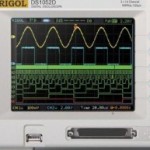- This topic has 31 replies, 13 voices, and was last updated 8 years ago by
 Rajguru M. Mohan.
Rajguru M. Mohan.
-
AuthorPosts
-
-
April 15, 2016 at 8:01 am #36885
 Rajguru M. MohanParticipant
Rajguru M. MohanParticipantHi Everyone,
I Have heard about photon counting detectors from NASA websites, But I am unable to understand this completely or fairly.
I want to know about such Innovations, Someone please suggest some links or more information about this.
I also want know about these technologies like photomultiplier tubes (PMT),
Hybrid photomultiplier detectors (HPD) and Single Photon Avalanche Diodes (SPAD)
that cover different spectral ranges between the UV and the NIR and Disruption Tolerant Networking .
To enhance the optical communications beacon-aided acquisition,
SCaN is developing beacons near the receivers onto which spacecraft can lock-on to.
Just like terrestrial lasers, the beam of space based optical lasers spreads out, or becomes dispersed.
Could somebody explain the term beacons .
How it will increase the sensitivity of recievers.Seeking your response.
-
April 15, 2016 at 8:06 am #36886
 Rajguru M. MohanParticipant
Rajguru M. MohanParticipantHi all,
Here are links from where I have get some basic idea of these technologies,
http://www.nasa.gov/directorates/heo/scan/engineering/technology/txt_opticalcomm_challenges.html
https://www.picoquant.com/products/category/photon-counting-detectors
http://rmdinc.com/photon-counting-detectors/Hope you will post more information and links about above topics.
Regards,
rajguru-
April 16, 2016 at 6:04 am #37177
 Remo De SuzaParticipant
Remo De SuzaParticipantHello Rajguru.
Can this be implemented in optisystem?Regards
Remo
-
-
April 15, 2016 at 9:52 am #36895
 prakash jatParticipant
prakash jatParticipanthi rajguru
see this video on youtube , you will learn totally-
April 15, 2016 at 10:27 am #36897
 nagesh kuknoorParticipant
nagesh kuknoorParticipantHi Prakash,
Thank you for sharing the video. It is just amazing. I loved the topic.
Regards
-
April 16, 2016 at 6:06 am #37179
 Remo De SuzaParticipant
Remo De SuzaParticipantHello Prakash.
Thank you for sharing this video. Can it be implemented in optisystem? I am looking forward to your response.Regards
Remo
-
-
April 15, 2016 at 10:24 am #36896
 nagesh kuknoorParticipant
nagesh kuknoorParticipantHello Rajguru,
Indeed a every interesting topic. I think it is somewhere related to photo detectors because if logically you see photodetectors also count number of photons which is our information. Anyways nice topic.Thanks
-
April 16, 2016 at 4:56 am #37128
 jyoti rainaSpectator
jyoti rainaSpectatorhi rajguru sir..
i too agree with nagesh sir..you can relate both..anyways a good question as mentioned by all.
with regards
jyoti-
April 16, 2016 at 12:58 pm #37219
 nagesh kuknoorParticipant
nagesh kuknoorParticipantHi Jyoti,
Thank you for your appreciation but i was just putting my point of view. May be both are two different things but i was putting my perspective. Anyway thanks.
Thanks
-
-
-
April 15, 2016 at 1:20 pm #36926
 Domail SinghParticipant
Domail SinghParticipantHello All,
Very good topic started by Rajguru. Also thanks to Prakash Jat for sharing such informative video about the same. I hope it is very helpful to Rajguru.
Regards
Domail -
April 15, 2016 at 4:50 pm #36945
Manoj Kumar
ParticipantHi Rajguru,
I agree with Domail singh that it is a very important topic… Also thanks Prakash Jat for providing the useful information…
Thanks and regards
-
April 15, 2016 at 4:52 pm #36946
 shafeen al yasinParticipant
shafeen al yasinParticipanthello All,
I agree with Nagesh here becuase both have same work. Anyway interesting topic and i hope someone continues with it..Regards
Shafeen-
April 16, 2016 at 1:02 pm #37220
 nagesh kuknoorParticipant
nagesh kuknoorParticipantHi Shafeen,
Thanks for appreciation. As i mentioned i was putting my point of view it can be wrong but anyway thanks.-
April 16, 2016 at 4:05 pm #37297
 shafeen al yasinParticipant
shafeen al yasinParticipantHi Nagesh,
You are welcome.
Regards
Shafeen
-
-
-
April 15, 2016 at 6:06 pm #37001
gaurav rajput
ParticipantHi Prakash,
Its a very nice video which you have uploaded……. Thanks once again..
Regards
-
April 16, 2016 at 6:10 am #37183
 Ankita SharmaParticipant
Ankita SharmaParticipantHi Prakash,
Thanks for providing the valuable information… A very nice video..
Regards
Ankita -
April 16, 2016 at 6:12 am #37186
 Rajguru M. MohanParticipant
Rajguru M. MohanParticipantHi Remo,
I don’t think Photon counting detectors and other related latest technologies like photomultiplier tubes (PMT),
Hybrid photomultiplier detectors (HPD) and Single Photon Avalanche Diodes (SPAD) will be implemented in optisystem till date.We hope this would be implemented in near future.
Regards,
Rajguru-
April 16, 2016 at 6:42 am #37191
 Remo De SuzaParticipant
Remo De SuzaParticipantHi Rajguru.
I thought you may be have something like that and that is the reason you posted here on the forum. Anyway thanks for sharing it.Regards
Remo
-
-
April 16, 2016 at 7:04 am #37201
 Rajguru M. MohanParticipant
Rajguru M. MohanParticipantHi prakash Jat,
Thank you very much for sharing such important for this latest technplogies.
I have seen the whole video, it is really a important and valuable information on photon-counting-detectors.Krister Shalm of university of waterloo, has explained the mentioned topic in brief.
“It is impossible to make anything hackerproof because hackers are ingenious”— great word by him.
Regards,
Rajguru -
April 16, 2016 at 7:07 am #37202
 Rajguru M. MohanParticipant
Rajguru M. MohanParticipantThank you all,
For your appreciation and consent, really it is very important and challenging topic in the fields of optical communication.
It is started by NASA.Please share more information on these topics.
Thank and reards,
Rajguru-
April 16, 2016 at 1:04 pm #37221
 nagesh kuknoorParticipant
nagesh kuknoorParticipantYou are welcome Rajguru. It is part of discussion.
Regards
-
-
April 16, 2016 at 9:16 am #37216
 prakash jatParticipant
prakash jatParticipanthi friends
you can try it for multiphics software as well as write matlab code of SEPD and interface it with WONAT software ( i hope it will make more robustic FSO link). And matlab code of SEPD is not much tedious work
-
April 16, 2016 at 9:18 am #37217
 prakash jatParticipant
prakash jatParticipanthi rajguru
we can’t say about hackerproof because every civilization would have their own mind -
April 16, 2016 at 1:06 pm #37222
 nagesh kuknoorParticipant
nagesh kuknoorParticipantHi Prakash,
Are you sure that we can implement it in optisystem. It sounds somewhat cool.
-
April 16, 2016 at 1:33 pm #37230
 prakash jatParticipant
prakash jatParticipantno nagesh
-
April 16, 2016 at 5:00 pm #37312
deepak jha
ParticipantHi all,
A very nice video by Prakash jatt..
Thanks -
April 16, 2016 at 5:38 pm #37320
Manoj Kumar
ParticipantHi Deepak,
Indeed a very nice video.. Cheers..
-
April 18, 2016 at 6:46 am #37847
Rahul Tiwari
ParticipantHi Prakash,
A very nice video.. Thanks gor the information
Regards
-
April 18, 2016 at 4:57 pm #38242
 FAYIQA NAQSHBANDISpectator
FAYIQA NAQSHBANDISpectatorHI ALL..
It was a nice part of information..The video was also helpful..Thank you all.
Regards
-
April 26, 2016 at 1:25 pm #38533
 Rajguru M. MohanParticipant
Rajguru M. MohanParticipantHi,
As we know Photon counting applications have had decisive impact on advances in a wide range of fields, from
astronomy and metallurgy to environmental protection, health diagnostics, medical analysis and imaging,
and – perhaps most spectacularly – biomedical research.
Photon counting has played an essential role in mapping the human genome. -
April 26, 2016 at 1:26 pm #38534
 Rajguru M. MohanParticipant
Rajguru M. MohanParticipantThree Technologies
Scientists can choose between three different devices for the most advanced photon counting:
Single Photon Counting Modules (SPCMs) – A SPCM counts photons with an avalanche photodiode
(APD). An APD is a solid-state, silicon-based device that converts photons into electrons in a dramatically
different way than an ordinary photodiode. In ordinary photodiodes, the photon/electron ratio is one to
one. In APDs, however, these photon-generated electrons can excite more electrons, which creates an
avalanche effect, resulting in an internal gain that can be adjusted with the bias,
e.g. 1 to 1000, and results in a signal that is proportional to the light’s intensity.
PerkinElmer’s Photon Counting Technologies
The PerkinElmer SPCM uses an APD that is 200 microns in diameter and operates at 20 volts above
breakdown voltage to generate a gain of 108. Since a gain at this level cannot be sustained without
burning the device, the SPCM comes with electronic circuitry that monitors and repeatedly quenches the
current with a TTL pulse. Operation in this photon-counting mode is extremely fast, allowing users to
count a photon every 50 nanoseconds.Thanks
-
April 26, 2016 at 1:28 pm #38535
 Rajguru M. MohanParticipant
Rajguru M. MohanParticipantHi,
There is another technologies for photon counting technologies:
Channel Photomultipliers (CPMs) – A CPM is actually an advanced monolithic version of the traditional
glass photomultiplier tube (PMT), which can also be used to count photons. Photons entering the CPM
produce electrons that are accelerated toward an anode through a multi-curved, semi-conductive vacuum
channel. As the electrons hit the channel walls, secondary electrons are produced, which, in turn, produce
still more. This creates an avalanche effect much like the APD.Also, Charged Coupled Devices (CCDs) – A CCD is an array of ordinary (non-avalanche) photodiodes that
feeds information to a set of read-out electronics. Unlike other detectors, where each photon directly
generates a single count of electrons almost instantaneously, the electrons produced in a CCD first charge
a capacitor. Users can then read out the intensity of light, which is proportional to the amount of charge.
Although CCDs are not specifically designed for photon counting, they can perform this function when
thermo-electrically cooled to reduce dark current and noise.Thanks
-
-
AuthorPosts
- You must be logged in to reply to this topic.

